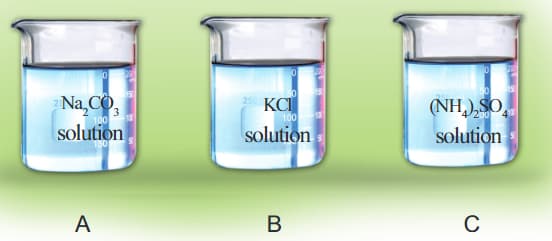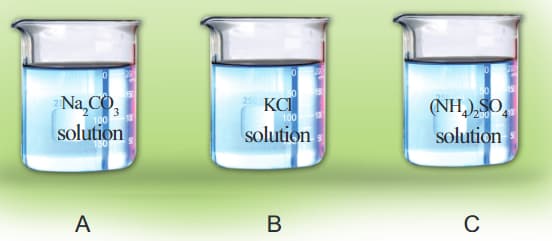Kerala Board Solutions for Chapter: Acids, Bases, Salts, Exercise 2: Exercise 2
Kerala Board Chemistry Solutions for Exercise - Kerala Board Solutions for Chapter: Acids, Bases, Salts, Exercise 2: Exercise 2
Attempt the practice questions on Chapter 5: Acids, Bases, Salts, Exercise 2: Exercise 2 with hints and solutions to strengthen your understanding. Chemistry Standard IX Part 2 solutions are prepared by Experienced Embibe Experts.
Questions from Kerala Board Solutions for Chapter: Acids, Bases, Salts, Exercise 2: Exercise 2 with Hints & Solutions
Organic acids are present in a number of substances we use in our daily life.
(e.g. Tomato, orange, apple, grapes, curd, etc.)
Identify the organic acids in each of them and tabulate.
Complete the equations of the ionisation of phosphoric acid.
(Dihydrogen phosphate ion)
_____ (Hydrogen phosphate ion)
_____ (phosphate ion)
How many types of salts can be formed by phosphoric acid? Why?
Write the chemical name of the following salts.
Solution of sodium carbonate, potassium chloride, and ammonium sulphate are taken in separate beakers.

Recall the colour change of litmus paper in each solution and tabulate.
| Salt | Colour of the litmus paper | Nature of the substance |
Solution of sodium carbonate, potassium chloride, and ammonium sulphate are taken in separate beakers.

Name the acid and alkali that react to form each salt given above?
Solution of sodium carbonate, potassium chloride, and ammonium sulphate are taken in separate beakers.

Can you explain the colour change of the litmus paper on the basis of the nature of the acid and alkali that react to form the salt?
(hint: Potassium chloride is a salt formed by the reaction between a strong acid and a strong alkali)
